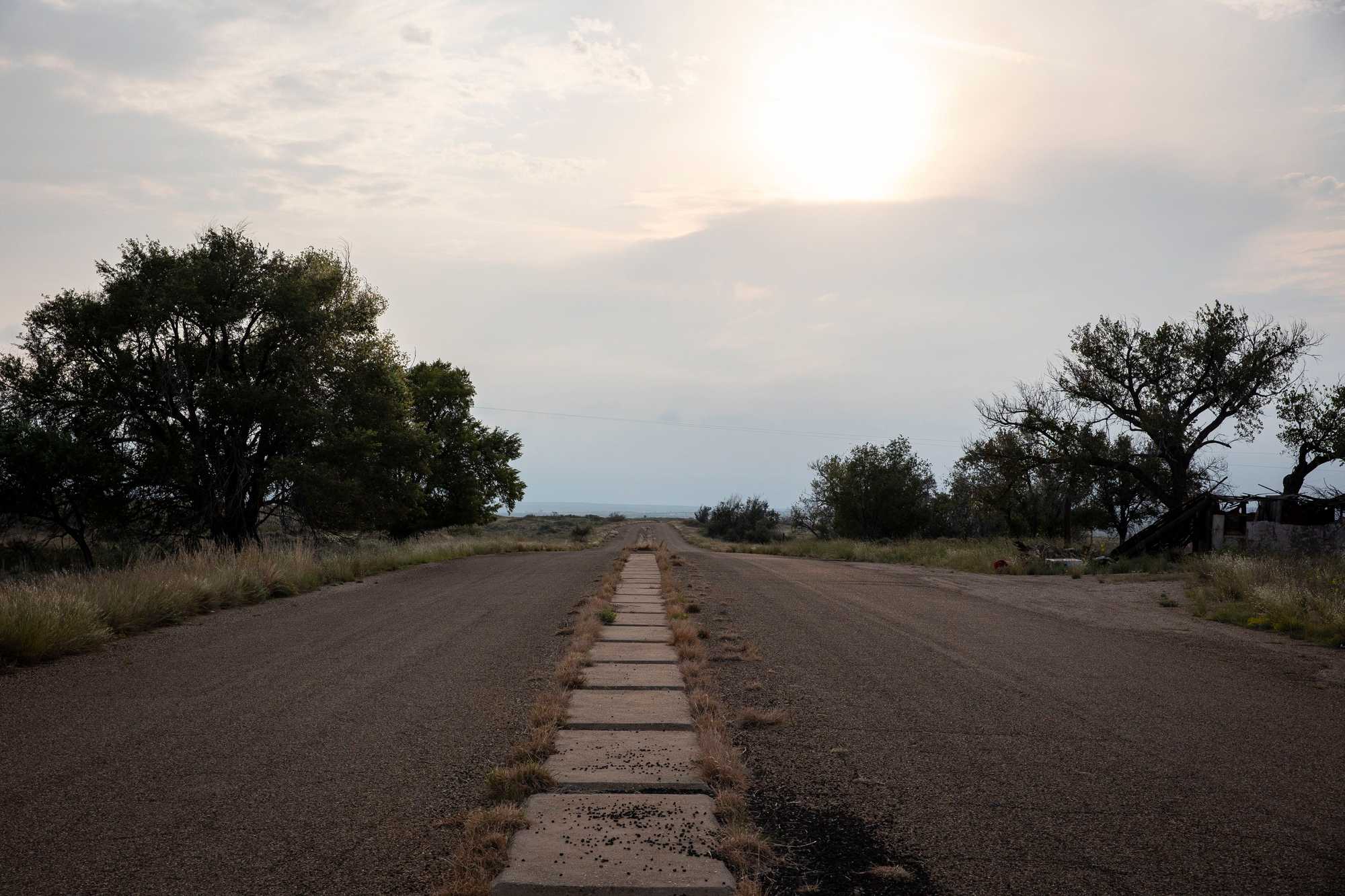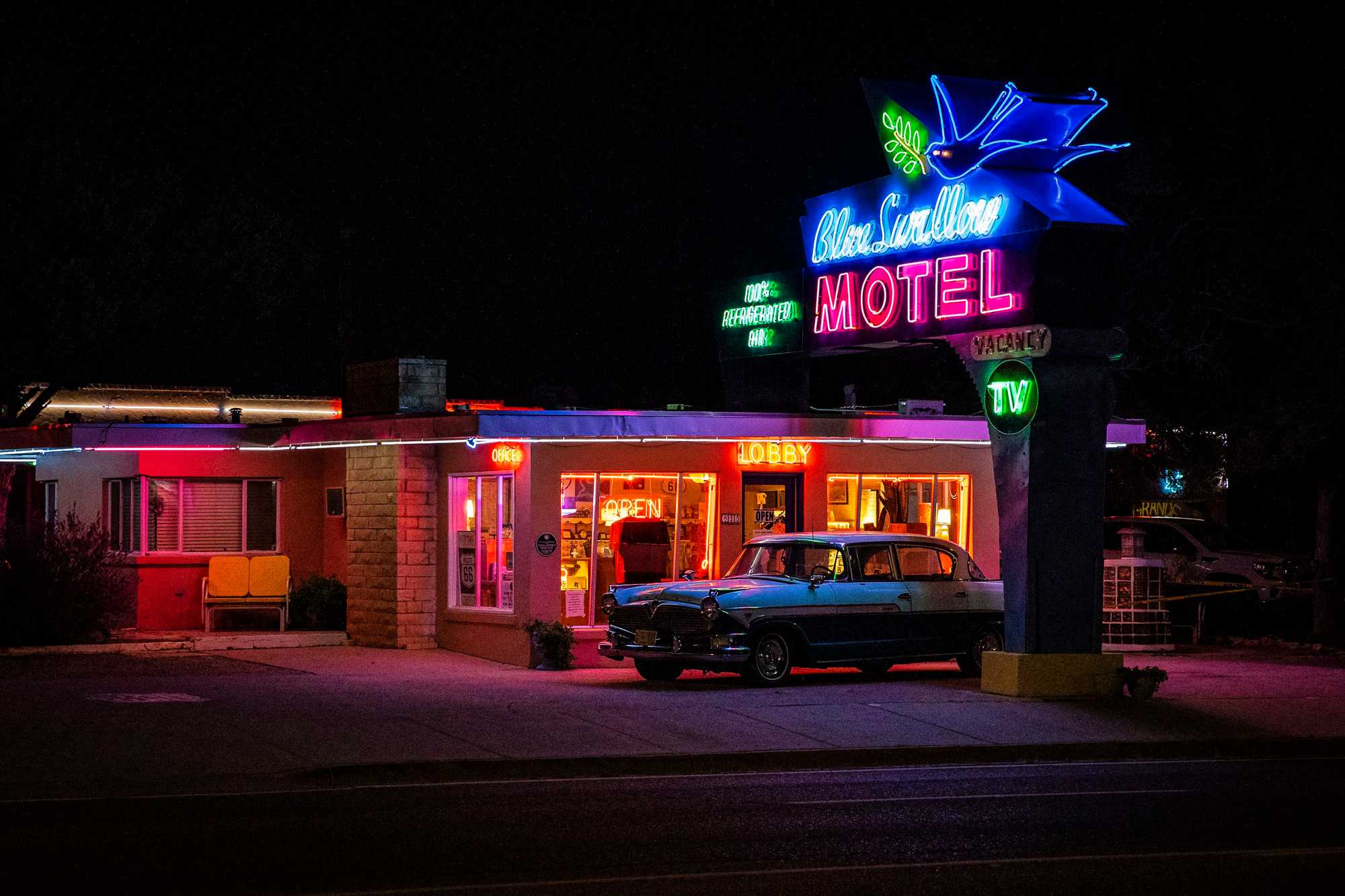
Los Angeles team
Nov. 4, 2022
Route 66 has long captured the public’s imagination — you probably haven’t heard the whole story
SANTA MONICA, Calif. — “We made it!” said a woman to the people in line behind her waiting to take photos by the “End of the Trail” Route 66 sign. “We started in Chicago!”
The others in line at the Santa Monica Pier seemed to care little, but she had an interested listener in me, since we had reached a similar milestone on our road trip. I chatted with her group, two couples — one from Pennsylvania, one from Mississippi — who had spent a year planning their 12-day trip along as much of the historic highway as they could.
I was jealous of how elated they were — the end of the road was far less satisfying for me, a Mexican immigrant.
I spent hours cruising along Route 66, drawn in by the promises of good old-fashioned Americana. But somewhere on that westbound journey, it dawned on me that the narrative on display — the one that had sat largely unchallenged in the minds of Americans for decades — was not enough to capture its reality.

Before Route 66 was officially decommissioned, it was a main artery of travel through much of the country. During the Dust Bowl, its travelers were heading west in search of work — John Steinbeck called it the “Mother Road” in “The Grapes of Wrath.” After World War II, families sought it out for a scenic vacation. Today, it defies any perfect categorization — it has not fallen victim to culture wars, but it has also failed to fully reckon with its complicated and dark history.
This realization led me to late nights in hotel rooms where I looked for a more comprehensive account. What I read about wasn’t apparent at any of the tourist destinations I came across: How many counties along Route 66, for example, were sundown towns that made it dangerous for Black people to travel the highway. And how tropes that stereotyped Hispanics and Native Americans were deployed for the entertainment of tourists (approximately 1,372 miles cut through Indigenous lands, according to the American Indian Alaska Native Tourism Association).
In many instances — including many of the period murals I saw along the way — people of color were largely erased altogether.
It’s easy to overlook what’s not represented, and be dazzled by the bright neon lights and old-timey motels. Easy to visit the diner and see a cartoonish “legend” meant to evoke Native American storytelling for the sake of white tourists and still order breakfast, or drive past businesses in the shapes of teepees with little sensitivity to accuracy in what they’re portraying.

I’m not the first person to feel that diversity and representation aren’t, on the whole, exactly figured out by Route 66, and I’m sure I won’t be the last.
“I think they’re making an effort in terms of shifting the culture and telling the whole story but . . . as usual, there’s a lot of work to do,” said Candacy Taylor, an author who has written extensively about Route 66 and the history of Black people traveling on it. For every souvenir shop “that’s really trying to address the truth,” she said, “there’s several that aren’t and that don’t want to have anything to do with that.”
I asked Taylor whether she’d ultimately found Route 66 to be good or bad or something else, and she said none of those — it’s just fascinating, she said, and a place you should go with your “eyes open that it’s not like it’s been marketed to be.” She sees Route 66 as emblematic of the promises made by America, and the failure to live up to them, as evidenced by the crumbling infrastructure left behind on much of the route.

My Globe colleagues and I had seen some of that. Glenrio, which sits on the state line between Texas and New Mexico, became an abandoned ghost town once it was bypassed. Today, it is just abandoned buildings covered in graffiti, hardly the epitome of the greatness of America. We were there at least 45 minutes, and not a single vehicle drove by. Meanwhile, we could see cars whizzing by on the nearby newer highway.
Toward the end of our road trip, I stopped by a Route 66 museum in Victorville, Calif. If I was looking for context, I wasn’t going to find much through the displays there — it was mostly a collection of decades-old paraphernalia, much of it set up as a photo op, that I had to battle throngs of European tourists to get to.
I can’t say that I didn’t enjoy my time on Route 66 and that I didn’t enjoy meeting people who live on it or who were traveling it at the same time. But it’s also true that the Mother Road has all along had favorite children, and they’re the white families it has long catered to, from the Midwest to the Wild West.
Credits
- Reporters: Julian Benbow, Diti Kohli, Hanna Krueger, Emma Platoff, Annalisa Quinn, Jenna Russell, Mark Shanahan, Lissandra Villa Huerta
- Photographers: Erin Clark, Pat Greenhouse, Jessica Rinaldi, and Craig F. Walker
- Editor: Francis Storrs
- Managing editor: Stacey Myers
- Photo editors: William Greene and Leanne Burden Seidel
- Video editor: Anush Elbakyan
- Digital editor: Christina Prignano
- Design: Ryan Huddle
- Development: John Hancock
- Copy editors: Carrie Simonelli, Michael Bailey, Marie Piard, and Ashlee Korlach
- Homepage strategy: Leah Becerra
- Audience engagement: Lauren Booker, Heather Ciras, Sadie Layher, Maddie Mortell, and Devin Smith
- Newsletter: LaDonna LaGuerre
- Quality assurance: Nalini Dokula
- Additional research: Chelsea Henderson and Jeremiah Manion
© 2022 Boston Globe Media Partners, LLC